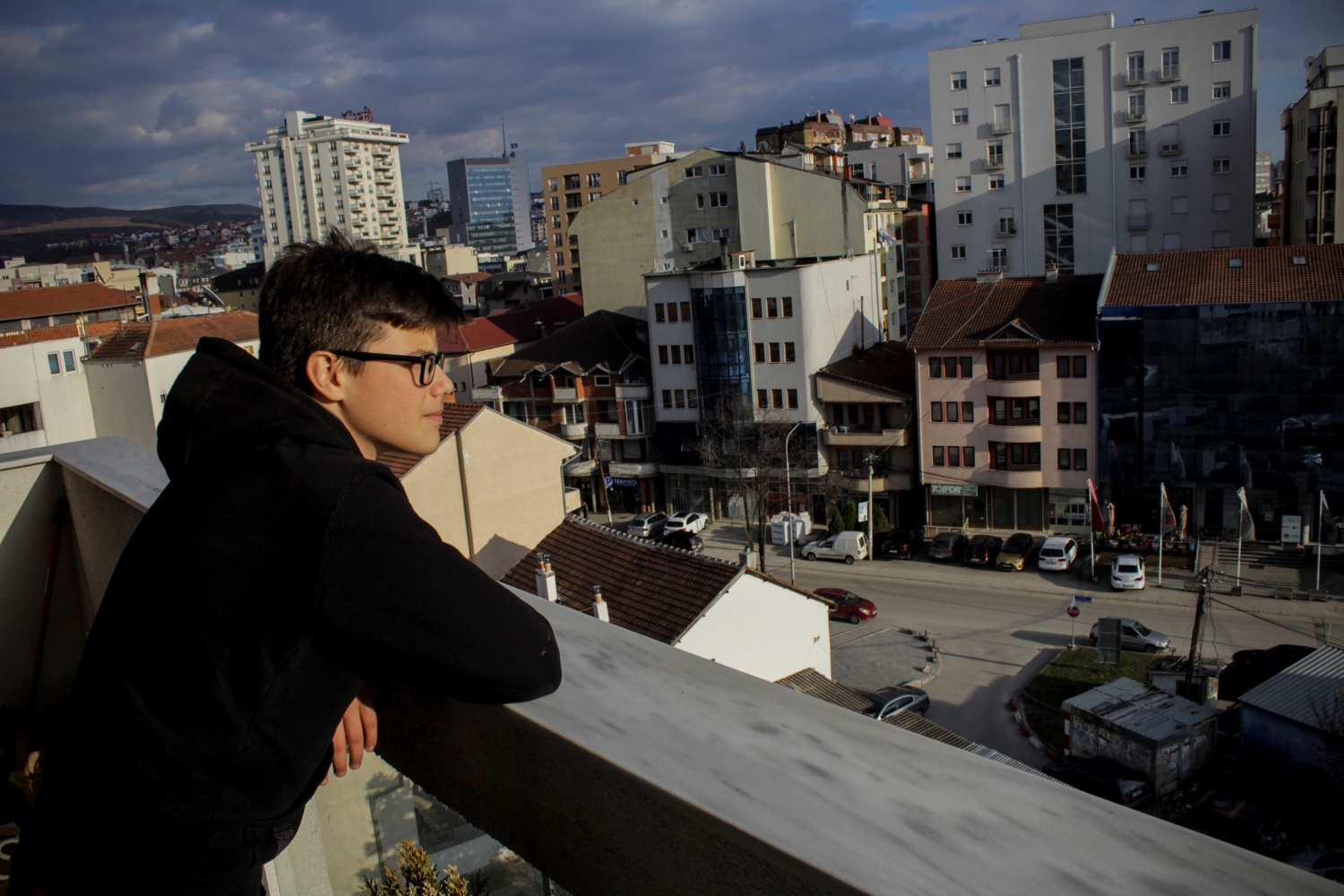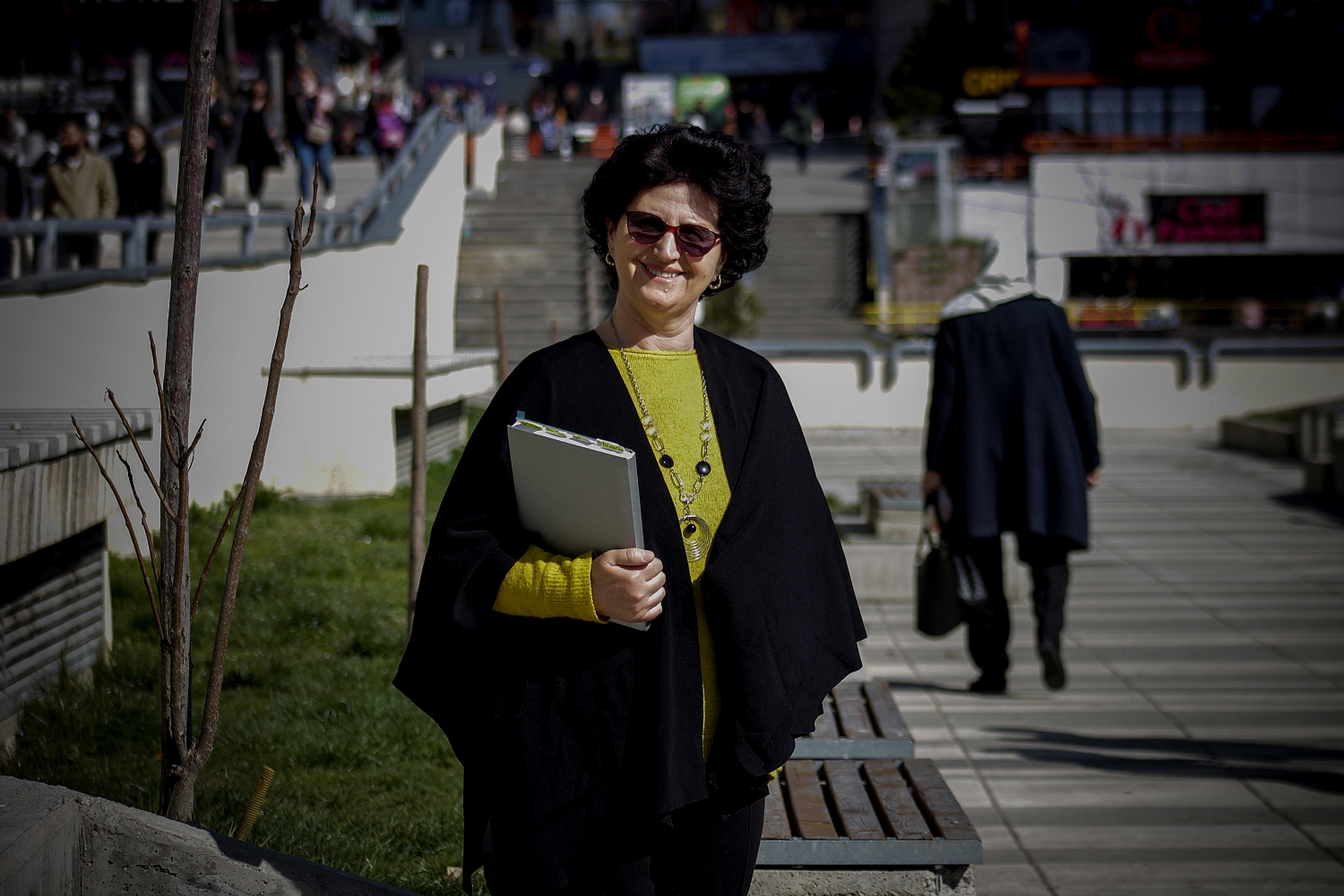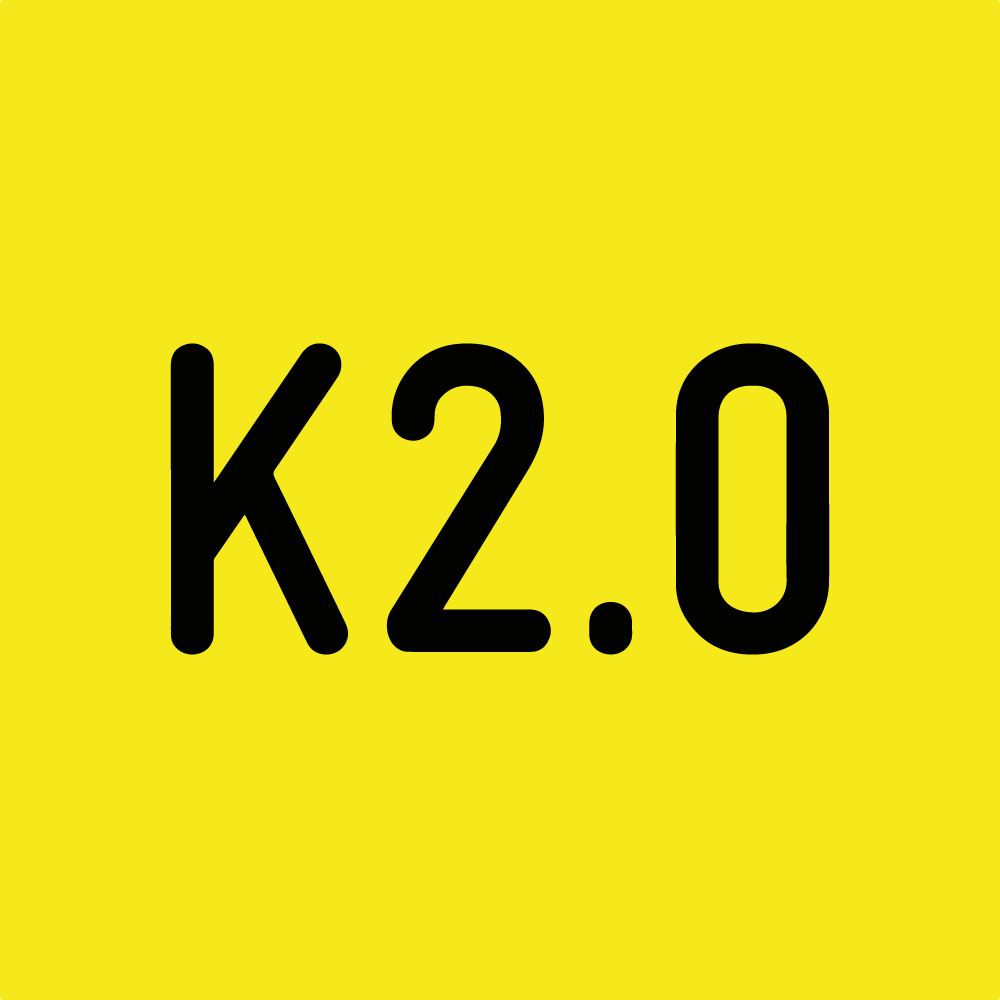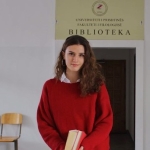Trim Ferizi, my 12-year-old brother, is one of the 317,223 students from elementary to high school who participated in distance learning in Kosovo beginning from March 2020. Over 9,000 students did not attend at all.
Before then, I was used to him spending his whole day at school, and when he came back home he did not have much time for anything else other than doing his homework before going to sleep. The lockdown and online education, however, changed this for him. “From the very first day of distance learning, I wanted to go back to school,” he says.
As a university student going through remote learning myself, I noticed how this burdened my brother, who now walked around the apartment in his pajamas all day long to find the best internet connection spot in order to attend his classes.
Not too long after his private school was shut down, Trim met virtually with his seven classmates and teacher to hold their classes according to their regular schedule. Unlike public schools, the size of their virtual classrooms, as in real life, was smaller and more manageable according to the private school teachers. The platforms they used were different from those suggested by the Ministry of Education (MES) as well, which suggests that the results of distance learning in public and private schools will vary and the consequences will surface later on. MES did not answer repeated requests to be interviewed for this article.
Every student that went to the Finnish School of Kosova was given their own iPad for attending the calls and completing the tasks. During this process they used Microsoft Teams, which was until then a foreign platform to them. The challenge for Trim and his peers was not using technology to attend the classes online; that is already an integral part of their generation.

Trim didn’t feel that online learning replaced the social aspects of school. Agan Kosumi / K2.0.
Their struggles were of a different kind. For many of them, school is a place where they meet their friends daily, where they can express themselves, and distance learning took this pleasure away from them. “The worst part was that I felt lonely, alone and bored, sometimes sad,” says Trim. “I missed being with a group of friends and the feeling of being among people my age, talking to them and all that.”
The short breaks between the classes, which when at school students would spend playing outside, were now filled with intervals of breaking news that Trim found annoying. “When I was in [virtual] class, I felt like I was in a bubble and I had no idea what’s going on around me,” he says. “Then, whenever the news came up, I would go out on the balcony and just watch the deserted streets.”
A much needed laptop
Erdoan Zymeri, an Ashkali 4th grader from Fushe Kosova, is another student who missed his friends during distance learning, and keeping in touch with them was not as easy. His mother, Nexhybe, tells how when the schools were shut down “there was one smartphone for all the children to use.”
Many children using a single device to attend distance learning was one of the main reasons why some children did not participate in online education. According to the COVID-19 impact assessment done by UNDP, 30% of Kosovar students had to share a single device for online education. Nexhybe, who witnessed four of her five children go through distance learning, had many concerns regarding this process. “I knew that when they were at school, they had no way to avoid grabbing the books and learning something,” she explains. “But at home,” she said, “I was scared that my children would fall behind, perhaps even fail a class.”
In order for distance learning to seem like it was working, effort was required from the triangle of parents, teachers and students, as well as access to technology.
However, Erdoan, unlike his three siblings, did not get to meet his teacher or classmates through Zoom video calls. His teacher only sent her students written instructions on how to complete the tasks and the rest was up to them. “I felt very bad because I was separated from my friends and I didn’t really know how to do my homework,” he says. “In class, whenever I did not know anything, I would raise my hand and ask but now I couldn’t do that.”
In order for distance learning to seem like it was working, effort was required from the triangle of parents,teachers and students, as well as access to technology. In cases where one of those was missing, there were gaps in the whole process. There continues to be no thorough accounting on the overall impact of online education in Kosovo’s education system.
According to the research I did for a report published by the GAP Institute, the reasons behind the lack of such an accounting vary depending on the municipalities and the MES is not yet willing to clarify whether they have done any research on this aspect.
Don’t always blame the children
Endrit Krasniqi, lives in Prishtina with his mother, Arta, and by the time the school he goes to, Meto Bajraktari, was shut down like all the others, he had just transitioned to the 6th grade with its 15 different subjects. He only got to know his teachers in the classroom for 7 months before all of them became voices and faces he only encountered through a screen.
Endrit had been a busy boy before the pandemic, engaging in many extracurricular activities that sometimes even drained him. The three weeks with no classes until the distance learning was organized gave him the physical and mental break that he had needed at the time, even though he claims that it was stressful to wait for the teachers to reach out not knowing what was going on.
As soon as contact was established, Endrit had to get used to the teacher’s preferences in submitting his homework daily. “Some of them wanted it through email, some others through Google Classroom; now they have added the other platform, E-shkollat; plus Zoom. They have mixed everything and we had to adjust to this,” he says.
Distance learning also shed light on some ugly aspects of Kosovo’s education system as a whole.
As he was discovering his learning style, and taking advantage of the online platforms where he could watch the video lessons at his own convenience, Endrit felt that the Zoom calls were becoming challenging. “As soon as we started getting into the lesson, the topic, the time would be up and we would drop everything halfway. The teachers spent a lot of time just checking on the students; who was present and who wasn’t,” he explains. “I didn’t like that.”
Endrit says that he liked keeping his camera off whenever it was optional. “That way was more comfortable,” he says. “I could be standing as I wished while I was in class.” He adds that he noticed this option gave his peers space to skip classes and to find other excuses for not attending. “There were people in my class who genuinely struggled with [internet or electricity problems], but some even used it as an excuse not to talk in class or not to be there at all,” explains Endrit. “They would say ‘Oh, teacher I’m using 4G and it’s not working’ or similar things,” and they would avoid attending classes.

Endrit became very independent and his mother Arta learned that everything that happened at school wasn’t his fault. Agan Kosumi / K2.0.
When asked about the best part of distance learning, Endrit says that “it was the option to watch the videos later or a second time, and organize your day the way you wanted to. I watched the video lessons on YouTube,” says he, “when I was in a better mood to study, because then I would do the homework immediately.”
Such time management skills often go unnoticed in the classroom because students are required to stay attentive all the time. Consequently, parents and teachers have been surprised at what their students and children have shown them throughout online education.
Like many other parents, Arta says that during the spring semester of 2020, which was completed entirely online, she had a chance not only to get to know her son better but also his teachers. “We got to know the teacher, we got to know our own child, how they behave, how they really are,” says she. “Frequently enough, we blame things on the children, so I began to understand that it’s not always the children who are to be blamed.”
Distance learning also shed light on some ugly aspects of Kosovo’s education system as a whole. “It was evident that the teachers were unprepared,” Arta said, pointing to some teachers’ weak technology skills and the gaps in communication. “It took about a month until we established contact. It was a heavy burden. When we finally got in touch, then, things got easier, both with us parents and the children formed groups and it got easier to communicate directly.”
Endrit talks of his teachers who “Not only kept in touch” but they used the opportunity to overload us even more and make it even more burdensome than it actually was.” In that case, the teachers who did the opposite, those who gave less homework or were more creative in delivering their lessons stood out from the rest. “There were those who wouldn’t overload the children and who would ask about the children’s health and well-being,” says the mother. “That made a good impression on me.”
‘A patch we sew on garments’
It was hard at times, especially for older teachers like Minire Piraj, a 5th grade teacher at the Dardania school in Prishtina with 23 years of experience. Minire called online education “a patch we sew on torn garments” to keep using them a little longer. Teachers, parents and students all agree that this time was more about maintaining learned content than progressing.
Minire spent her lockdown days in her village, in the midst of the serenity of nature, where she often had internet or electricity problems. She also faced the challenge of privacy. “I have two nieces and three nephews who would sense that I had to work and would immediately come to my door, knocking, making noises so as to attract attention,” Minire says. “I often found myself walking around the house with the phone in my hand trying to find a quiet spot where the connection worked too.” In such cases, Minire would only voice call her 27 students, because turning on the cameras would cause lags in the connection.
Consequently, distance learning in Hani i Elezit was more easily handled due to the teachers’ familiarity in using technology in lesson planning and delivery.
What Minire singled out as the benefit of distance learning was the time she could devote to each of her students individually. “This way of having classes allowed me as a teacher to devote my time to each student individually and this was especially beneficial for students who were not doing that well in class. I could address every student’s difficulties in the best way that would be helpful to them and I could never do this before trying distance learning.”
However, making time for individual work with 27 students, including one with Down’s syndrome who had to be reached daily via Viber, does not give one the luxury of time to spend on class preparation. “I did not use slides; it would complicate things. I did not have many tools at home either and was already putting lots of time into checking on each student individually. So the slides were neither needed nor easy to make.”

Minire spent more time on individual learning with her students. Agan Kosumi / K2.0.
One of the findings from the GAP report is that the municipality of Hani i Elezit is the only one where the Directorate of Education has provided laptops for its 110 teachers. The report also shows that laptops distributed years before the pandemic showed the necessity of owning a private computer. Consequently, distance learning in Hani i Elezit was more easily handled due to the teachers’ familiarity in using technology in lesson planning and delivery.
Teachers in Kosovo’s other municipalities were not as privileged. Besides not being given equipment to use during the lockdown (when at home they often didn’t even have any of the resources they usually have in the traditional classroom), teachers were also not given a rise in their wage nor supported in any other manner, according to the GAP report.
Lessons learned
Distance learning and the pandemic in general have forever changed the way we perceive technology in education. The head of UNICEF in Kosovo, the organization that helped create the new E-Shkollat platform, Murhat Sahin, told K2.0 that digitized education (as we have partially experienced during distance learning) was once considered “the future,” whereas now it has become a necessity. Such a process requires that the role of the teacher be switched to that of the facilitator in the learning process rather than “the knowledge center.”
One finding of the GAP report is that it depends on the municipalities (the Directorates of Education) how digitalization is managed, and so far, every municipality defines this process differently. This certainly did not help the schools and students in dealing with online education more efficiently; on the contrary, the lack of technological preparations by the ministry, the lack of teacher’s technology skills and the lack of equipment in many of the students’ families were the most prominent factors that hindered distance learning in Kosovo.
A year into this process, the students, parents and teachers all learned lessons from their experiences. One lesson they have all got in common is that they prefer in-person learning and teaching rather than virtual. Teachers have learned that their profession is not dying and that there are more innovative ways of performing it; and parents have learned that they underestimated the work that teachers do with their children every day.
Lastly, one of the most important lessons that distance learning taught the students was that they were capable of handling on their own the greatest part of their learning process at school. Erdoan got to practice his computer skills on the new laptop as he watched the video lessons independently; Trim managed to handle his tasks and homework in addition to staying alert to the situation with the pandemic, focusing on not letting it affect him negatively; and finally, Endrit sums up what all of the other characters, students, teachers or parents have mentioned at some point in their interviews: “I learned that I shouldn’t do things for the teachers, I should do them for myself,” Endrit said.K
Featured image: Agan Kosumi / K2.0.
This article is produced as part of the Mentorship Program within the EU-funded project “Citizens-engage!”, implemented by Kosovo 2.0 in partnership with GAP Institute. Its contents are the sole responsibility of Kosovo 2.0 and GAP Institute and do not necessarily reflect the views of the European Union.










A good picture of current educational process that requires more and more articles and researches of this kind. We have to be as brave as Miss Ferizi to plan our future and take better care of our children.